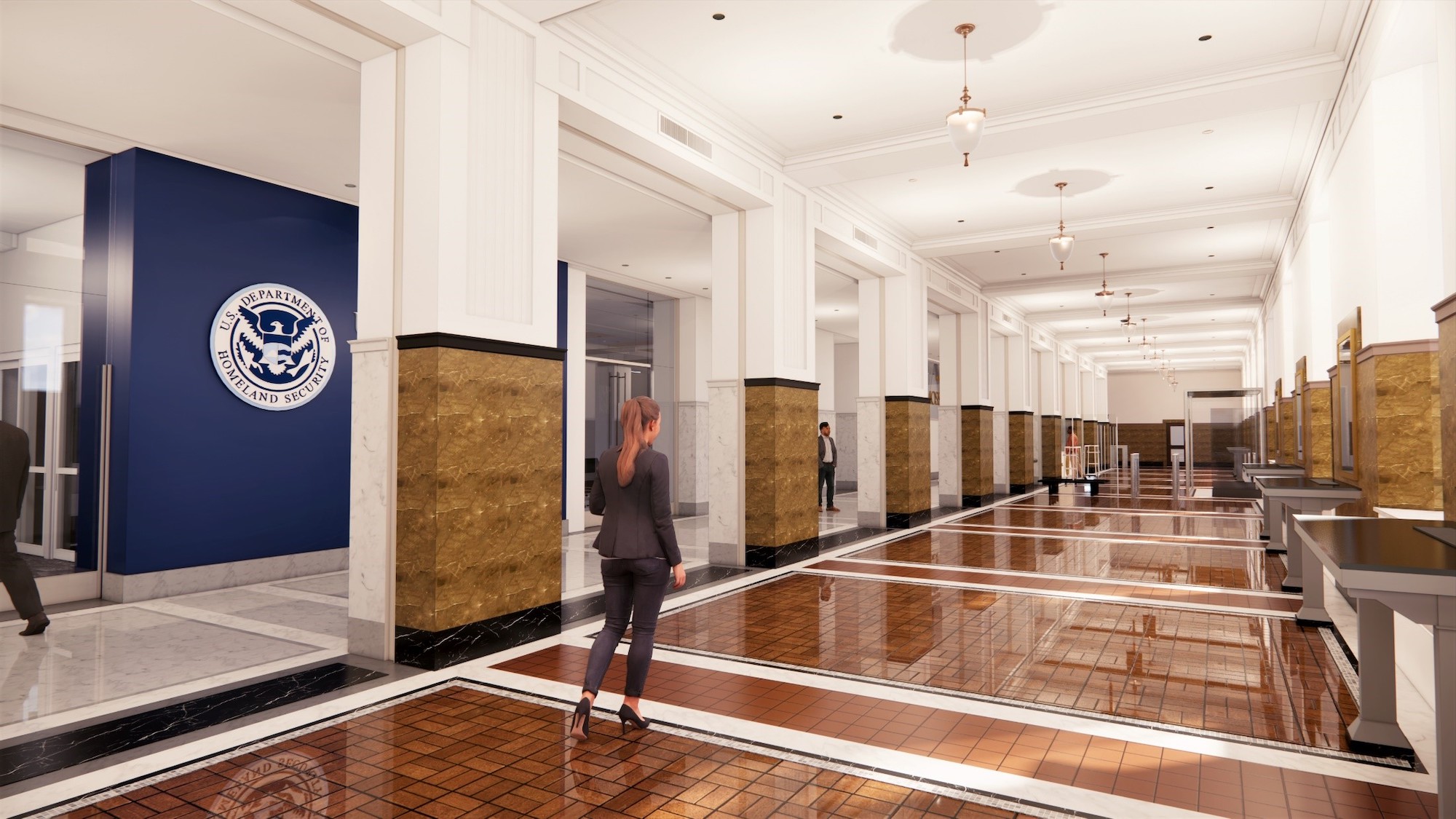In downtown Salt Lake City, the Frank E. Moss U.S. Courthouse is being transformed into a modern workplace for about a dozen federal agencies. By providing offices for agencies previously housed elsewhere, the adaptive reuse project is expected to realize an annual savings for the federal government of up to $6 million in lease costs.
Built in 1905 as a federal courthouse and post office, the building underwent renovations and expansions in 1912 and 1932. By 2020, the building sat largely vacant. Its unreinforced masonry construction and its proximity to the Wasatch Fault made it the most at-risk building in the U.S. General Services Administration’s entire portfolio, according to a statement from HOK.
The design by HOK and Trivers Associates restores the building’s terrazzo, marbled lobbies and corridors, and wood-paneled courtrooms to their original quality. The project team is working both to preserve the building and to create a “building within a building” that meets the latest federal earthquake risk management standards.
The seismic upgrades include reinforced concrete shear walls and thousands of epoxy dowels added to the existing masonry walls, as well as new foundations and steel collector elements below each floor to tie the original building with two additions.
Costing a reported $116 million, the 250,000-sf project also will provide the latest workplace technology and amenities, including breakout rooms, lounges, and cultural galleries. Wellness features include indoor bicycle parking, showers, and lactation and wellbeing rooms on every floor.
The building, which is targeting LEED Gold certification, will use 50% less energy and 30% less water than a similarly sized building, and it will reduce embodied carbon by 59% compared to a new replacement building. A chilled-beam heating/cooling system will reduce airborne particulates, improve efficiency, and lower carbon emissions.
On the Building Team:
Owner: U.S. General Services Administration
Design architect and architect of record: HOK
Historic architect: Trivers Associates
MEP/FP engineer: HOK, Spectrum Engineers, Henderson Engineers
Structural engineer: HOK, SGH, Dunn Associates
Construction: Big D, Jacobs

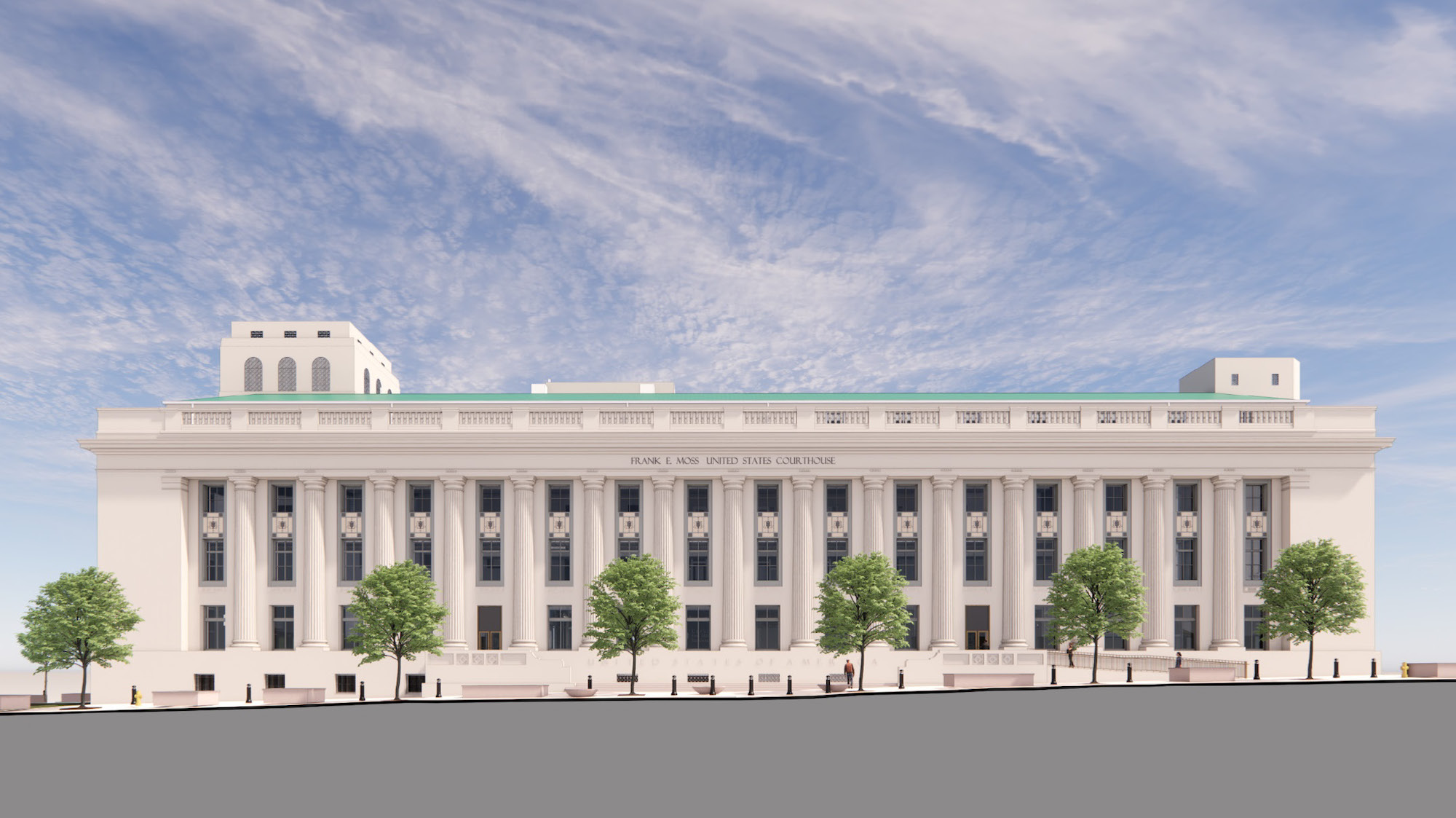
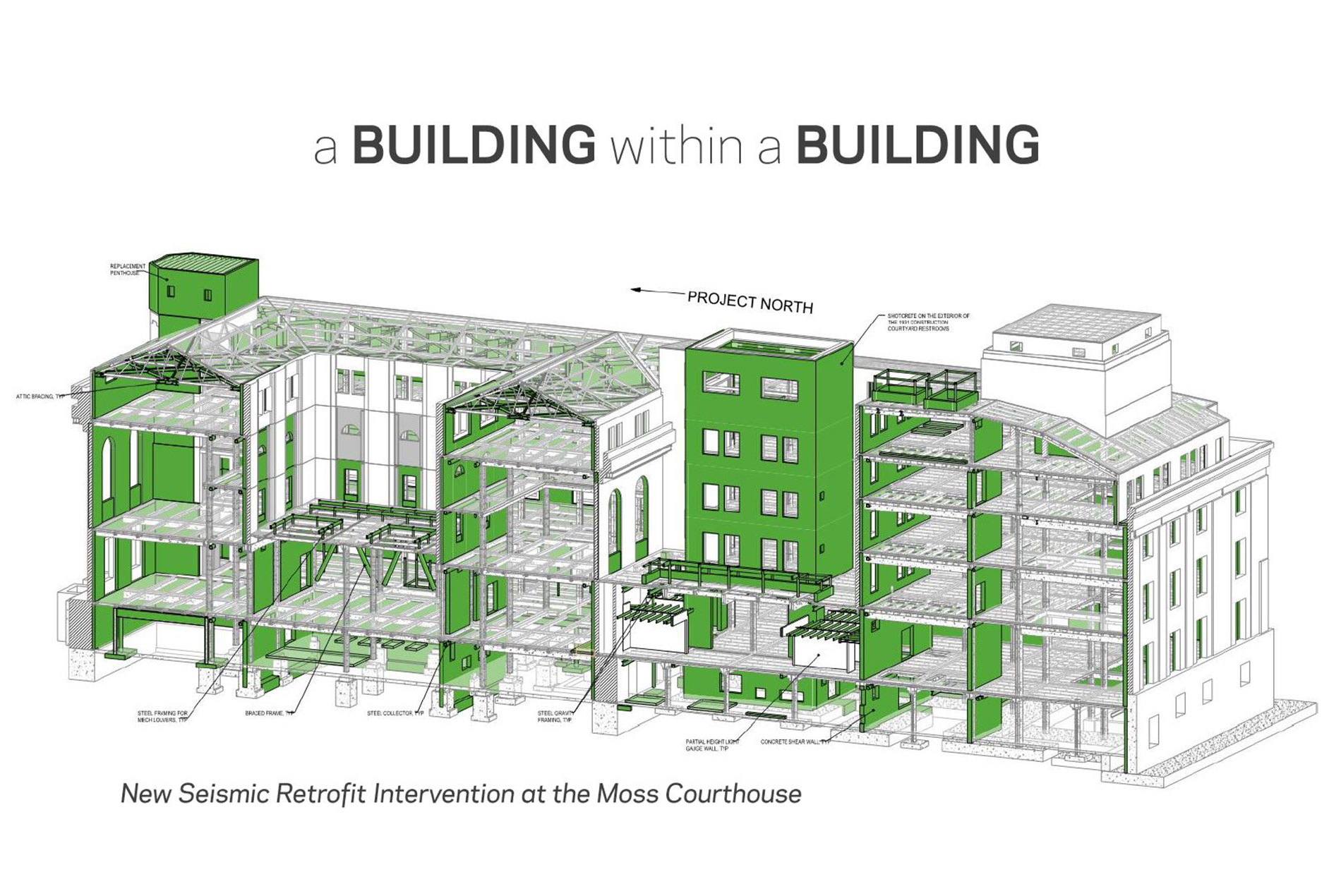
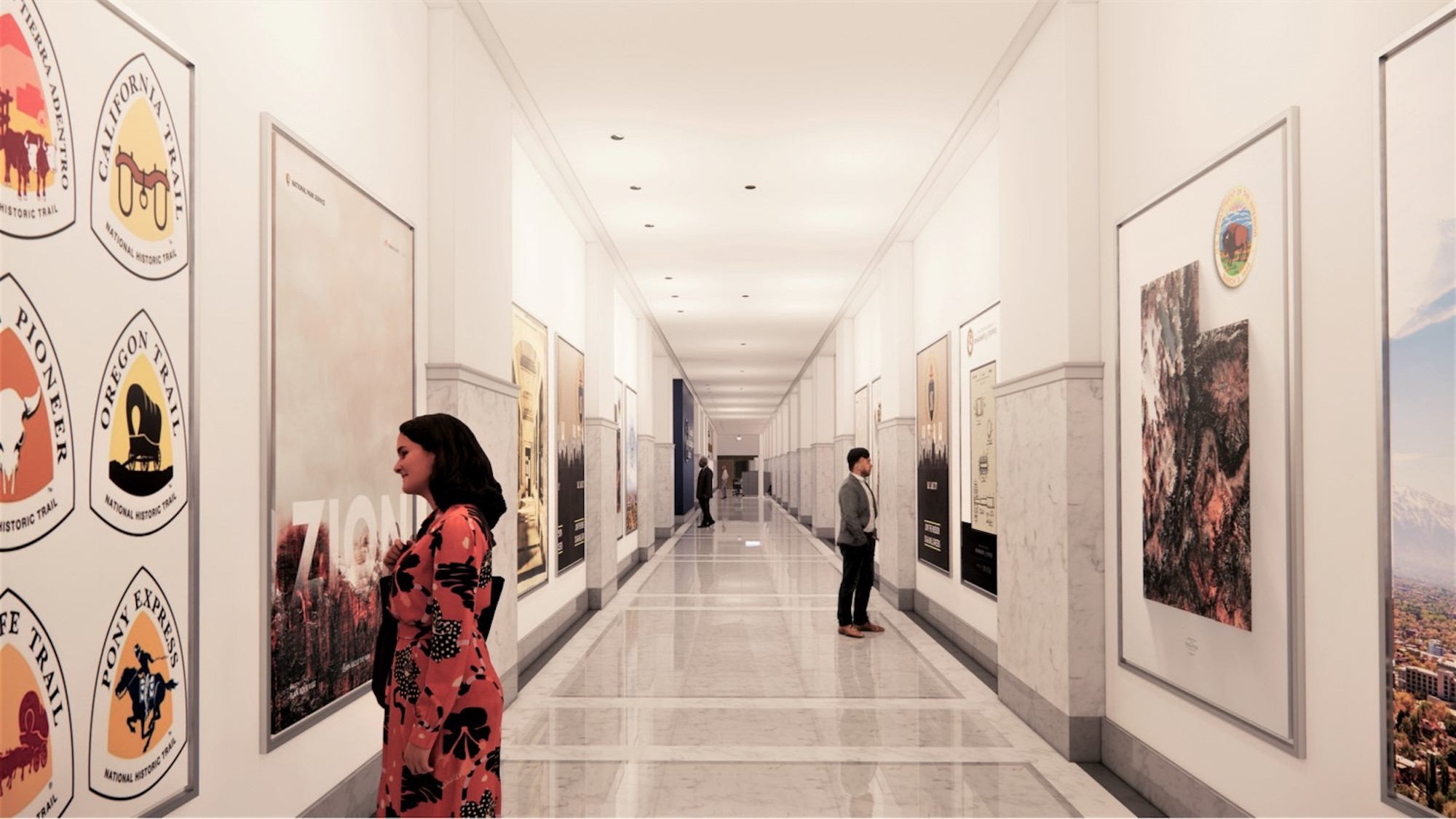
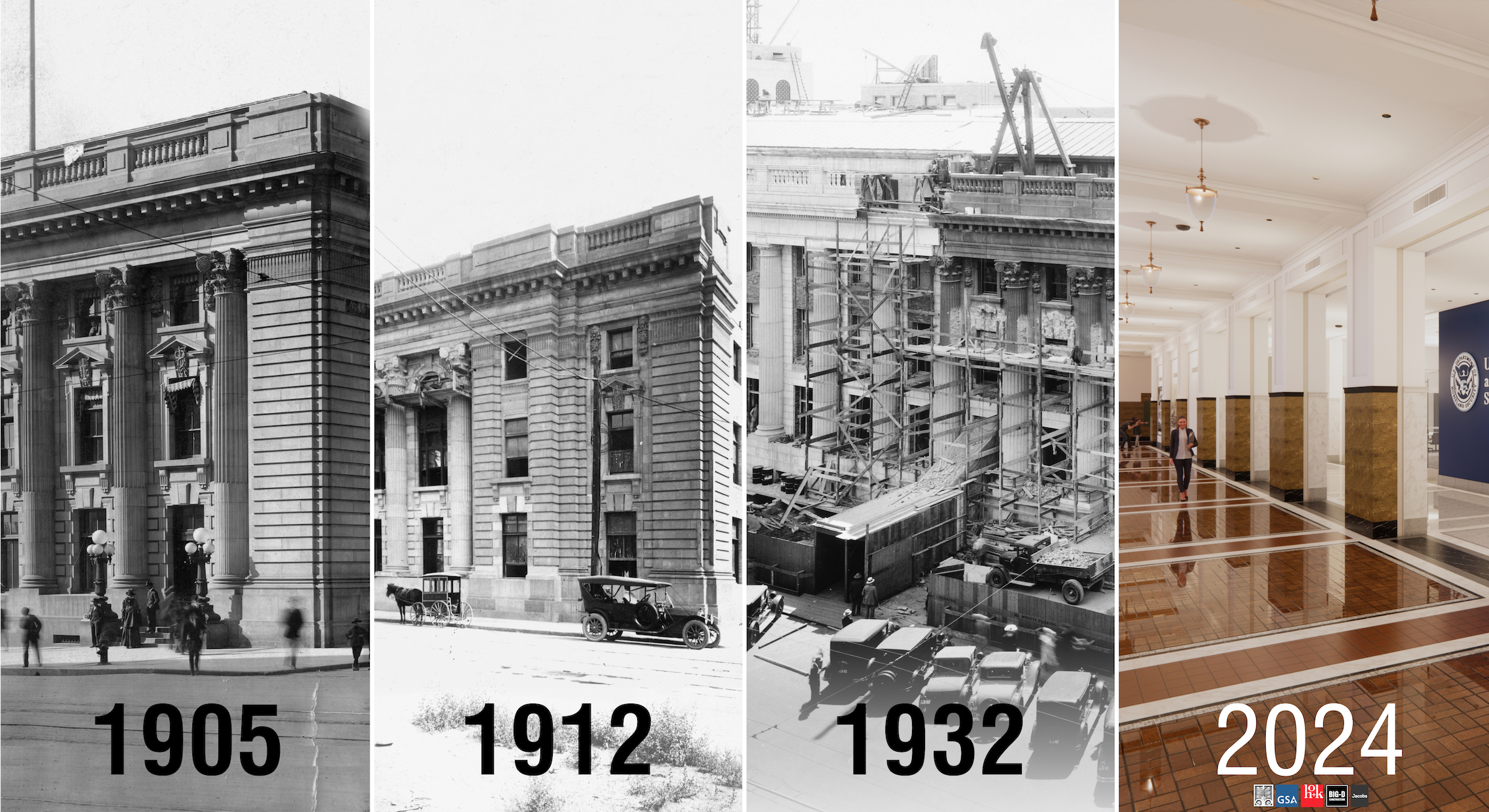
Related Stories
Adaptive Reuse | Sep 19, 2023
Transforming shopping malls into 21st century neighborhoods
As we reimagine the antiquated shopping mall, Marc Asnis, AICP, Associate, Perkins&Will, details four first steps to consider.
Office Buildings | Sep 14, 2023
New York office revamp by Kohn Pedersen Fox features new façade raising occupant comfort, reducing energy use
The modernization of a mid-century Midtown Manhattan office tower features a new façade intended to improve occupant comfort and reduce energy consumption. The building, at 666 Fifth Avenue, was originally designed by Carson & Lundin. First opened in November 1957 when it was considered cutting-edge, the original façade of the 500-foot-tall modernist skyscraper was highly inefficient by today’s energy efficiency standards.
Adaptive Reuse | Sep 13, 2023
Houston's first innovation district is established using adaptive reuse
Gensler's Vince Flickinger shares the firm's adaptive reuse of a Houston, Texas, department store-turned innovation hub.
MFPRO+ Research | Sep 11, 2023
Conversions of multifamily dwellings to ‘mansions’ leading to dwindling affordable stock
Small multifamily homes have historically provided inexpensive housing for renters and buyers, but developers have converted many of them in recent decades into larger, single-family units. This has worsened the affordable housing crisis, say researchers.
Adaptive Reuse | Aug 31, 2023
New York City creates team to accelerate office-to-residential conversions
New York City has a new Office Conversion Accelerator Team that provides a single point of contact within city government to help speed adaptive reuse projects. Projects that create 50 or more housing units from office buildings are eligible for this new program.
Adaptive Reuse | Aug 31, 2023
Small town takes over big box
GBBN associate Claire Shafer, AIA, breaks down the firm's recreational adaptive reuse project for a small Indiana town.
Adaptive Reuse | Aug 17, 2023
How to design for adaptive reuse: Don’t reinvent the wheel
Gresham Smith demonstrates the opportunities of adaptive reuse, specifically reusing empty big-box retail and malls, many of which sit unused or underutilized across the country.
Adaptive Reuse | Aug 16, 2023
One of New York’s largest office-to-residential conversions kicks off soon
One of New York City’s largest office-to-residential conversions will soon be underway in lower Manhattan. 55 Broad Street, which served as the headquarters for Goldman Sachs from 1967 until 1983, will be reborn as a residence with 571 market rate apartments. The 30-story building will offer a wealth of amenities including a private club, wellness and fitness activities.
Adaptive Reuse | Jul 27, 2023
Number of U.S. adaptive reuse projects jumps to 122,000 from 77,000
The number of adaptive reuse projects in the pipeline grew to a record 122,000 in 2023 from 77,000 registered last year, according to RentCafe’s annual Adaptive Reuse Report. Of the 122,000 apartments currently undergoing conversion, 45,000 are the result of office repurposing, representing 37% of the total, followed by hotels (23% of future projects).
Urban Planning | Jul 26, 2023
America’s first 100% electric city shows the potential of government-industry alignment
Ithaca has turned heads with the start of its latest venture: Fully decarbonize and electrify the city by 2030.


